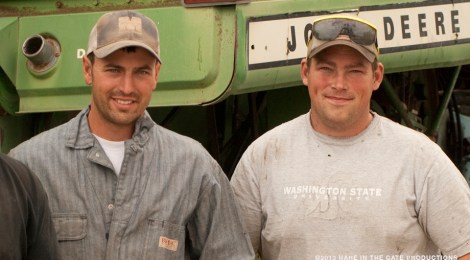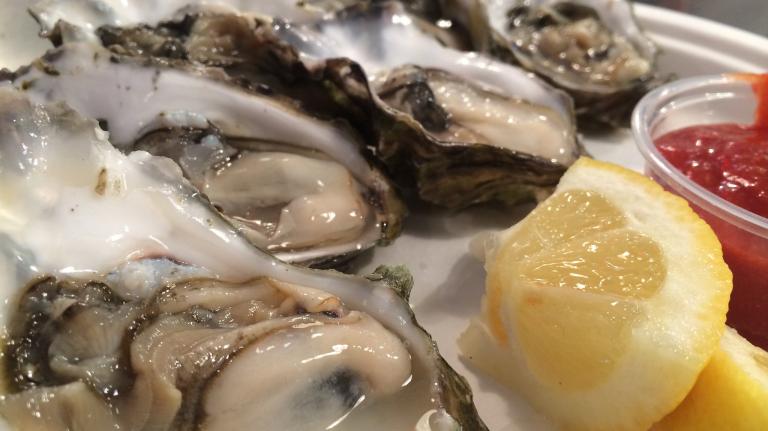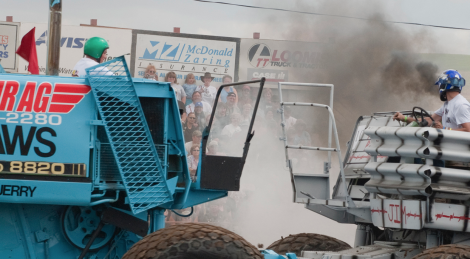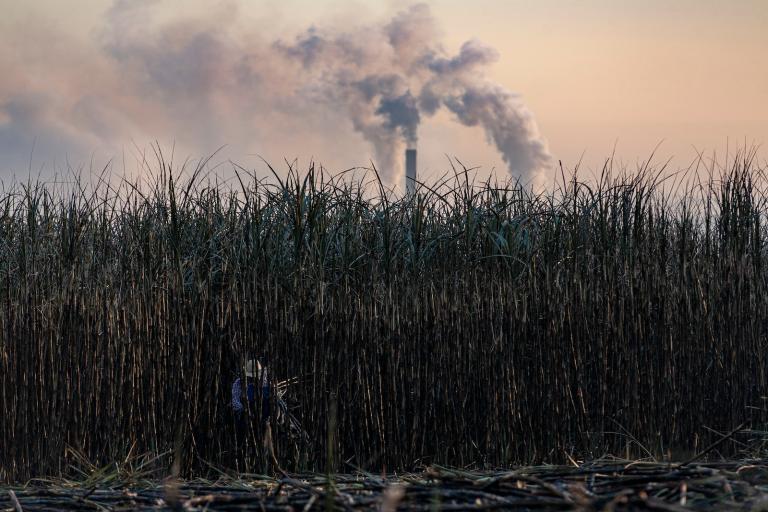This article is part of a mini-series on the plight of the mid-sized farm. Read part 1 on the difficulties of organic farming and part 2 on the contrasts between foodies and farmers.
The calculus that drives farmers off the land, and drives the documentary Dryland, is simple and inexorable. Historian Keith Williams lays it out halfway through the movie: Think of the farmer cutting wheat by hand, then zoom forward in history, past the farmers harvesting with teams of horses, past the first tractors, past the first combines (so called because they combined the reaping, threshing, and winnowing in one machine), to the air-conditioned, satellite-guided modern combine. “Well, that same change has really altered the farm size, which means the farm can grow,” Williams says. “More capitalization, they can get more equipment. All of this translates into more acreage per farm. But that also means fewer farmers.”
More efficiency, more land, fewer farmers. It’s also the calculus that has given us cheap food. Cheap food relies on ridiculously cheap grain. One farmer in the film notes that he bought a loaf of whole wheat bread for the same price that he sold an entire bushel of wheat.
Dryland, directed by Sue Arbothnot and Richard Wilhelm, is a wistful documentary — lots of long shots on beautiful empty fields, empty storefronts, empty streets, rusting equipment — and rightfully so. The way of life it captures is contracting, ratcheting in on itself, leaving small towns that are unable to support businesses, and schools without students.
The documentary follows Josh Knodel and Matt Miller, two friends in the town of Lind, Wash. When Miller finishes high school, he is one of eight graduates in his class. The boys fix up old combines to enter in the yearly destruction derby, the cultural high point for many families in the area. The movie follows them as they become a dominant force in the competition. There are always parts to be scrounged, because there are plenty of old combines aging out of their useful lives. Those old combines had to come from somewhere: Farmers who failed, or who upgraded to the newer and better model. But, as one farmer points out, at $350,000 for a new combine, “you gotta cut a lot of acres to make a payment on that.”
The only thing more daunting than those numbers is the passion these people have for the land. “The dirt’s in my blood,” that farmer, Ruben Fode, says. “I can’t shake it.”
The land can shake off the farmers, though. When Josh Knodel graduates from college, he realizes there’s just not enough land for him to live his dream of farming alongside his father. Instead, he takes a job with John Deere — the company that builds those shiny new combines, appropriately enough. This has been the way things have gone: The farm kids mostly move away for work as the need for labor subsides. (In my grandfather’s case, there was a job with the USDA when he moved off the farm.)
Could we imagine a brighter future for American agriculture? A future, that is, other than increasingly lonely towns, with just a few maintenance workers to keep the robots working? That’s our trajectory, and perhaps that’s not so bad. It might be more efficient, opening up more land for wilderness. It might be safer, without the need for dirty, low-wage jobs. But I think we’d lose something important if agriculture stopped supporting rural culture. And there’s a good case that increasing the number of people working the land can also increase the quality of the environment.

Josh Knodel and Matt Miller.Hare in the Gate Productions
There are alternatives that could break the cycle of bigger farms and fewer farmers. One way to do it would be to stop spreading out and instead to farm more intensively, using more people to produce more food from each acre. The organic farmers who got started 50 years ago have proved that that’s possible, and that people will pay a little more for food if they believe they are truly supporting a model that helps family farms, and the environment, thrive.
The formula wouldn’t work exactly the same way — it’s hard to imagine community-supported agriculture flourishing in tiny Lind — but the model holds great promise if people are willing to take charge, rather than simply drifting with the flow of history.
One spoiler (though this moving documentary transcends the appeal of suspense): In the end, the Knodels manage to buy more land, enough for Josh to return home and begin living his dream. It’s a happy ending … as long as you don’t think too hard about whoever sold them that land.
Dryland DVDs will be available soon via the website. Also check there for information on upcoming screenings around Oregon, Washington, and Idaho. It’s slated to show at the Red Ants Pants Festival in White Sulphur Springs, Montana, July 24, and in Washington at the Moses Lake Museum & Art Center on Oct. 15, and the Yakima Valley Museum on Oct. 30.
Next in this series: A Grist editor talks to her ranching father about the land she left behind.




